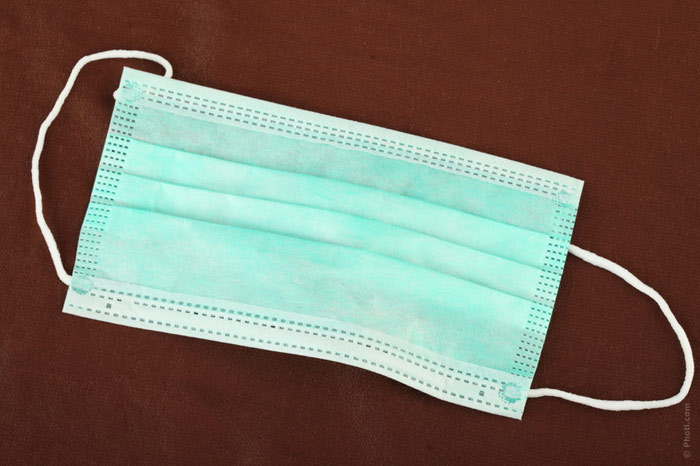How to Avoid Typical Fall Diseases Like Urinary Tract Infections & Running Nose?
It happens that fall brings not only blues but various body disorders. This is a typical time for the seasonal exacerbation of chronic diseases. We will tell you, which diseases most often bother us in the fall, and which prevention measures should be taken in order to avoid unpleasant scenario this year.
Why chronic diseases are exacerbated in the fall
If we are talking about disease exacerbation or relapse, we mean chronic non-infectious diseases, which, as a rule, are prolonged and develop due to a whole range of factors: genetic, physiological, ecological and others.
Although general health is important at any time of the year, in the fall and spring, the body is particularly vulnerable and subject to physiological stress. The abrupt change in climatic conditions, a lack of sunlight, unstable hormone levels, a lack of essential micronutrients and vitamins exposes our immune system and triggers the “slumbering” pathological processes.
Therefore, it is so important to follow the guidelines that will help support our body in the offseason. These include giving up bad habits, resistance to stressful situations, a stable emotional background, normal work schedule, sufficient sleep and nutrition, being in the fresh air, and moderate physical activity.
The most common diseases that are most often exacerbated in the spring-fall period, are as follows.
ENT illnesses
Exacerbations of bronchopulmonary diseases, as well as ear-nose-throat diseases: bronchitis, rhinitis, sinusitis, sinusitis, otitis, tonsillitis, pharyngitis, laryngitis, etc., are usually due to overcooling and sharp temperature changes. The clinical picture is characterized by lesions of the mucous membranes, secretions from the nose, ears, bronchus, cough, and fever.
ENT-organs have a specific structure and are closely interconnected, so the disease of one organ almost always affects the whole system. For example, a sore throat leads to a runny nose, and the latter may cause an inflammation of the hemorrhoids, which is usually accompanied by fever, severe headaches, and purulent discharges from the nose. Therefore, a complex treatment is always prescribed.
Skin problems
Chronic dermatological diseases (dermatitis, eczema, etc.) also tend to show up in the offseason. Fall brings rash on the skin, often on the hands. This rash can subsequently merge into large foci with purulent contents. This process is accompanied by swelling, burning, the appearance of wounds and skin crust, which in turn provokes erosive lesions on the skin. The reason for such exacerbations is often neurosis, stress, as well as the diseases of the gastrointestinal tract: gastritis, duodenitis, colitis, intestinal dysbiosis, cholecystitis, etc.
Skin reactions to low-temperature regimes and weather phenomena – cold, frost, wind, high humidity – are also typical of allergic people. First-aid medications during relapse periods are antihistamines – they are able to relieve acute symptoms. However, you need a thorough diagnosis and treatment.
Diseases of the genitourinary system – the inflammation of the bladder mucosa (UTI), and pyelonephritis, an inflammatory process in the kidneys, pose the greatest danger due to the fact that they often have weak clinical manifestation. As a result, patients address the doctor when it is late. In turn, hidden diseases become chronic, reactivating from time to time and becoming harder and harder to manage.
UTI and pyelonephritis usually develop at an early age, with the onset of sexual activity – anatomical structure affecs the exposure to infections.
The diseases can reactivate with the onset of pregnancy and after childbirth. Hormonal changes, body reorganization, and concomitant diseases are the reasons for this.
The symptoms of chronic cystitis are familiar, perhaps, to every second or third woman. Burning, itching, dull pain at the bottom of the abdomen may appear during interseasonal periods due to weather changes and hypothermia, and these symptoms are often cured with drugs. Pyelonephritis causes acute or dull pain in the lumbar spine, a change in the color and transparency of the urine, fever, chills, severe sweating.
Warmth, bed rest, diet and exercise limitations are the first assistants both in the onset of the disease and for preventive purposes during fall-spring periods of exacerbation. However, comprehensive professional medical therapy is obligatory. Without it, each exacerbation aggravates the inflammatory process and ultimately leads to irreversible renal dysfunction or the sexual system dysfunction.
Hypertension
Cardiovascular Diseases. We mean hypertension – increased blood pressure, which becomes more intense in the fall. Headaches become more frequent, often leading to nausea, general weakness and depression, drowsiness, and reduced function. Blood pressure is an acquired pathology and an extremely widespread health concern. This disease is getting younger. While the problem used to be typical of elderly people, it can affect the young and able-bodied nowadays.
The risk of acquiring hypertension is greatly increased due to concomitant factors: smoking, alcohol consumption, unhealthy diet, sedentary lifestyle and a lack of movement. Doctors prescribe hypertension medication that should be taken on a regular basis. Along with this, it’s important to understand that maintaining a healthy and active lifestyle not only during the fall season but also throughout life will help avoid relapses, make the course of the disease stable and controlled, and reduce the risk of stroke or heart attacks.
Every adult should undergo a health-check at least once a year, to reveal metabolic risk factors of developing chronic diseases. Knowing the causes of the disease, one can learn to influence the reactions of their own organism, manage the disease and preserve the quality of life.




